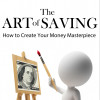Mastering the Difference Between Your Needs and Your Desires
It's my money but do I need or want it now?
Knowing the difference between a want and a need is the easiest way to keep your spending in check. Unfortunately, this can be difficult sometimes. Sellers are always looking to satisfy customer wants and needs for a price, while sometimes mixing the two. Many times our desire for a purchase will turn into a battle of want vs need. In the miniature opera above, you will find many individuals stating how they need that money now. However, what if they are after the money so they can buy something that is merely a want? It can be much easier to figure out the difference by using an effective needs evaluation system. Here is a chapter from my upcoming book "The Art of Saving: How to Create Your Money Masterpiece" to give you some needs and wants insight.
Chapter 2: Determine What You Really Need
Imagine if a random person were to walk up to you on the street and ask the question, “What do you need?” Would it be difficult for you to answer off the top of your head? You would probably think to yourself, “What do I need to…what? Survive? Stay safe? Be happy?”
These are some of the very same questions that any seller is looking to answer for a buyer. Sometimes the answer to a need is very simple: a hungry man needs some food. Other times the answer can prove to be very complex: a girl who has just been dumped needs some new clothes because her ex-boyfriend broke her heart, causing her to gain ten pounds in the last month, and her self-image is suffering. Believe it or not, the reason for making a purchase can become even more convoluted and confusing as a person’s situation changes. Sellers have a number of different ways to cut through the fog of the consumer mind. The most prevalent of which is the important tool of marketing.
When you think of marketing what comes to mind? Do you think of iconic cartoon marketers such as Chester Cheeto and Tony the Tiger, or do you start humming a commercial jingle and get a sudden urge to “Buy Mennen”. Some advertising campaigns are more effective than others, but this certainly does not happen by chance.
One main reason for the hit-or-miss nature of marketing is that some marketers have mastered the art of effective persuasion. They are able to convince average consumers of what they need by telling them, rather than allowing the consumer to make the decision. If enough consumers decide to buy into the concept, the sellers will consider the marketing effort a success.
Flashing lights, vibrant signage, and excited sales people all contribute to making people want to buy what is being sold. My goal before I explain how to use some of this marketing and promotion to your advantage is to have you take a look at yourself, and determine if some things are really needed at all. I have four questions that you should answer in helping to determine if something in a potential buying situation is a need rather than a want.
1. Who told me I needed this?
2. How was I getting along before this “need”?
3. Is this solving a problem or creating one?
4. Is it going to take away from something else?
Who says it is a want or a need?

Who told me I needed this?
By asking this question you are determining if you are being given an extra nudge towards a buying decision. I want to illustrate how this question can sometimes be answered incorrectly.
We can all remember the days in grade school when a new toy came out. For me, it was all about getting the newest action figures. Whenever I would see some of my friends playing with a new G.I. Joe or Power Ranger, I knew that it was something I had to have. I would see the toys being enjoyed by my friends at school, and when I got home I saw commercials showing me just how much I was missing out on. Needless to say, I made sure my parents knew about this new “need” in my life. A few weeks and a few chores later, I usually was able to get my new toy and play with the cool kids again.
My situation describes how seeing others enjoying a product or service, combined with exposure to marketing, can lead to a purchase. Truthfully, there is nothing wrong with having friends or family influence buying decisions, unless you start to see it as a problem. Sometimes a fresh perspective on what you should buy can lead to some new and interesting products coming into your life. The problem arises when the influence on you is not coming from a source with your best interests in mind.
Businesses are in existence to make money. Marketing exists to earn money for these businesses, and the way they bring in money is to generate sales. As I mentioned earlier, the key to this is convincing customers to buy into a new product or service. The concept of “utility” really gets to the heart of how a business sells to you. Utility in terms of marketing is the benefit or value that a customer believes they are receiving from a product or service. In the case of my action figure purchases, I valued the toys much more than the time I spent doing chores to get my prize.
How was I getting along before this “need”?
You should consider what you already have before deciding that you have to get something new. This will be discussed in great detail later in the book, but I want to get your gears grinding on this subject a little bit now. Some marketing and some products in general are very good at what I call the “green effect” and I am not referring to environmental friendliness. What I mean is that many ads always make the grass look greener on the other side with regards to the haves and have-nots of purchases.
It always make me laugh, but infomercials present this in a very in-your-face manner. “Are you tired of your blanket falling of your shoulders?” or “Wouldn’t it be nice to get rid of that stubborn soap scum?” are just two of the numerous pitch lines out there. Their goal is to make you move to the other side of the fence, for a price of course. It is very easy to pick out the obnoxious efforts of the “green effect”, but almost all advertising uses it. New cars are shown as a way to increase prestige; cigarette product placement in vintage movies was supposed to make smokers appear sophisticated, and the list goes on.
Weigh all the options of your needs and wants!

Is this solving a problem or creating one?
Rarely are businesses looking to sell you a problem or hardship. In most cases, a company bringing something new to the market genuinely does have something innovative that they believe will make people’s lives easier or more fun. That being said, when making a purchase, decide if the object or service in question solves or creates a problem based on your specific circumstances. There are a number of issues that could potentially arise.
A new purchase could cause a physical issue. For example, someone buying new furniture could end up realizing they do not have the room for it when the inevitable room rearranging happens. I realize how ridiculous this situation sounds. After all, who in their right mind would buy something they do not physically have room for? However, if you are looking for real life proof of this, just watch an episode ofHoarders, or remember what it is like to try and squeeze a couch through a mouse-hole sized doorway because the tape measure was an afterthought. That is just a space-related problem. Do not even get me started on what would happen if the new couch doesn’t match the carpet, or new curtains don’t go with the fresh coat of paint.
Moving away from the physical component of a purchase, there is also the financial side to consider. While a product might be great, the financial burden created by it may not make it worth the investment. Having been recently married, I am now realizing that just because Icouldbuy all of the necessary components for a man cave of epic proportion, my savings account and my better half will likely say otherwise. Of course the same holds true for wives as well. While I will always tell my wife that she would look great in anything she could buy in the store, she knows that some of the more expensive pieces are better left to the imagination until some extra money comes.
A final issue that can arise from a purchase is the emotional toll. Arguments over finances are unfortunately a constant stressor for many couples and families. Nobody needs more stress in their lives, especially when it comes to money. The unfortunate truth is that many family members and single individuals end up experiencing post-purchase cognitive dissonance, or buyer’s remorse, after making a purchase. A large part of the reason for this is that they did not find out whether something was smart purchase for their situation.
Is it going to take away from something else?
When evaluating whether or not to take the plunge on a purchase, the best advice I can give is to find out what is being given up for this purchase. This is known as the opportunity cost of something. It means that by spending your money, time, or energy on something, you have given up the opportunity to use the resources elsewhere. For example, say that you really want to go out to a movie tonight, but you have a work assignment you should be finishing.
At this point, you have to make a decision and weigh the opportunity cost of both sides. You can forgo scratching your entertainment itch at the expense of being better equipped for work. Your other option is to tentatively create a more hectic work week, but you get to enjoy a relaxing evening.
Whether it is your valuable time, a substantial amount of hard earned money, or some goodwill with a significant other, be sure you know what is being given up in exchange for a purchase. Unfortunately, I see many people neglect to find this out when they are buying something. The bills are not paid, but they can call you to complain about money issues on a brand new smart phone. The fridge is empty, but they leave an expensive restaurant with a full stomach, you get the idea. In physics, it is said that for every action there is a reaction. I want you to be sure that whatever reaction you will be creating will be beneficial to you, rather than creating a domino effect of financial hardship...
Hopefully you find this method helpful to determine the difference between all of your wants and needs. This is just a preview of the plethora of content that you will find in "The Art of Saving: How to Create Your Money Masterpiece". If you like what you have read,check out some of my other hubs on Ebay and saving in general until the whole book is officially released. For an idea of the different types of needs and how they may fit into your life, check out the video below!








